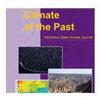过去 450 千年日本和中国夏季降水对轨道强迫的对比反应
IF 3.2
2区 地球科学
Q1 GEOSCIENCES, MULTIDISCIPLINARY
引用次数: 0
摘要
摘要理解东亚夏季季候风降水的轨道尺度变化是古气候研究的一个基本问题,因为它有助于评估东亚季候风对不同气候作用力(如日照、冰量和温室气体)的响应。然而,由于不同代用指标之间的不一致,东亚季风变化的根本驱动力仍存在争议。本研究利用气象研究所耦合大气环流模式(MRI-CGCM2.3)2.3 版气候模式模拟了过去 450 千年日照变化下的全球气候。东亚夏季日照的变化导致了中国和日本不同的气候反应:夏季日照的增加导致了中国夏季降水的增加和日本夏季降水的减少。对强北半球夏季日照下模拟气候的综合分析表明,印度洋在强日照下变暖,导致北太平洋副热带高压(副高)增强。与副高增强相关的季风前线北移导致中国沿海地区降雨量增加。与此相反,日本周围的 EASM 强度受到北太平洋高气压强度的影响。在日照强烈的情况下,北美大陆与北太平洋之间的热对比增加,使北太平洋高气压增强,从而减少了日本周边地区的夏季降水。因此,由于与不同海洋盆地的相互作用,太阳-日照变化对东亚夏季降水的影响存在很大的区域差异。本文章由计算机程序翻译,如有差异,请以英文原文为准。
Contrasting responses of summer precipitation to orbital forcing in Japan and China over the past 450 kyr
Abstract. Understanding orbital-scale changes in East Asian summer monsoon (EASM) precipitation is a fundamental issue in paleoclimate research as it helps assess the response of the East Asian monsoon to different climatic forcings, such as insolation, ice volume, and greenhouse gases. However, due to inconsistencies between different proxies, the fundamental driving force for EASM variability remains controversial. The present study simulated the global climate under given insolation changes over the past 450 kyr using a climate model, version 2.3 of the Meteorological Research Institute's Coupled General Circulation Model (MRI-CGCM2.3). Changes in summer insolation over East Asia resulted in distinct climatic responses in China and Japan: an increase in summer insolation led to increased summer precipitation in China and decreased summer precipitation in Japan. Composite analyses of simulated climate under strong boreal-summer insolation suggest that warming of the Indian Ocean occurs under intense insolation, resulting in the intensification of the North Pacific subtropical high (sub-high). The northern shift in the monsoon front, associated with the intensified sub-high, leads to an increase in rainfall in the coastal area of China. In contrast, the intensity of the EASM around Japan is affected by the strength of the North Pacific High. Under strong insolation, the increase in thermal contrast between the North American continent and the North Pacific Ocean intensifies the North Pacific High, decreasing summer precipitation around Japan. Thus, strong regional differences in the effects of solar-insolation variability on summer precipitation in East Asia exist due to interactions with different ocean basins.
求助全文
通过发布文献求助,成功后即可免费获取论文全文。
去求助
来源期刊

Climate of The Past
地学-气象与大气科学
CiteScore
7.40
自引率
14.00%
发文量
120
审稿时长
4-8 weeks
期刊介绍:
Climate of the Past (CP) is a not-for-profit international scientific journal dedicated to the publication and discussion of research articles, short communications, and review papers on the climate history of the Earth. CP covers all temporal scales of climate change and variability, from geological time through to multidecadal studies of the last century. Studies focusing mainly on present and future climate are not within scope.
The main subject areas are the following:
reconstructions of past climate based on instrumental and historical data as well as proxy data from marine and terrestrial (including ice) archives;
development and validation of new proxies, improvements of the precision and accuracy of proxy data;
theoretical and empirical studies of processes in and feedback mechanisms between all climate system components in relation to past climate change on all space scales and timescales;
simulation of past climate and model-based interpretation of palaeoclimate data for a better understanding of present and future climate variability and climate change.
 求助内容:
求助内容: 应助结果提醒方式:
应助结果提醒方式:


